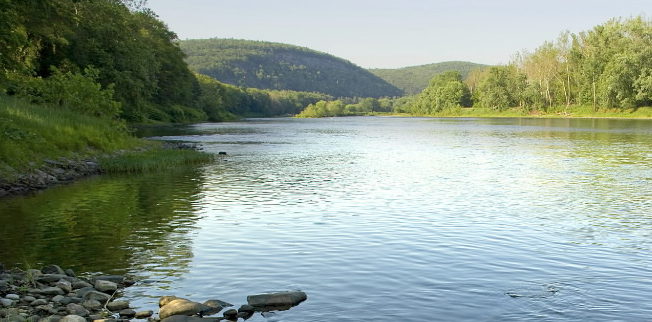New study shows rising water temperatures in U.S. streams and rivers
Solomons, Md. (April 6, 2010) – New research by a team of ecologists and hydrologists shows that water temperatures are increasing in many streams and rivers throughout the United States. The research, published in the journal Frontiers in Ecology and the Environment, documents that 20 major U.S. streams and rivers – including such prominent rivers as the Colorado, Potomac, Delaware, and Hudson – have shown statistically significant long-term warming. By analyzing historical records from 40 sites located throughout the United States, the team found that annual mean water temperatures increased by 0.02-0.14°F (0.009-0.077°C) per year. Long-term increases in stream water temperatures were typically correlated with increases in air temperatures, and rates of warming were most rapid in urbanized areas. “Warming waters can impact the basic ecological processes taking place in our nation’s rivers and streams,” said Dr. Sujay Kaushal of the University of Maryland Center for Environmental Science (UMCES) and lead author of the study. “Long-term temperature increases can impact aquatic biodiversity, biological productivity, and the cycling of contaminants through the ecosystem.” “It’s both surprising and remarkable that so many diverse river systems in North America behaved in concert with respect to warming,” said Dr. David Secor of the UMCES Chesapeake Biological Laboratory whose work focused on Maryland’s Patuxent River, where he has noted a 3°F increase since 1939. The analysis indicates that 20 of the 40 streams studied showed statistically significant long term warming trends, while an additional 13 showed temperature increases that were not statistically significant. Two rivers showed significant temperature decreases. The longest record of increase was observed for the Hudson River at Poughkeepsie, New York. The most rapid rate of increase was recorded for the Delaware River near Chester, Pennsylvania. “We are seeing the largest increases in the most highly urbanized areas which lead us to believe that the one-two punch of development and global warming could have a tremendous impact on stream and river ecosystem health,” said Dr. Kaushal. Given long-term global warming and “urban heat island effects” related to the abundance of buildings, roads, concrete, and asphalt, the authors point out that conserving riparian forests, reducing impervious surfaces, adopting “green” infrastructure practices, and reducing greenhouse gas emissions can help reduce increased water temperatures.Contact: Christopher Conner
cconner@umces.edu
443-496-0095
University of Maryland Center for Environmental Science
New study shows rising water temperatures in US streams and rivers
